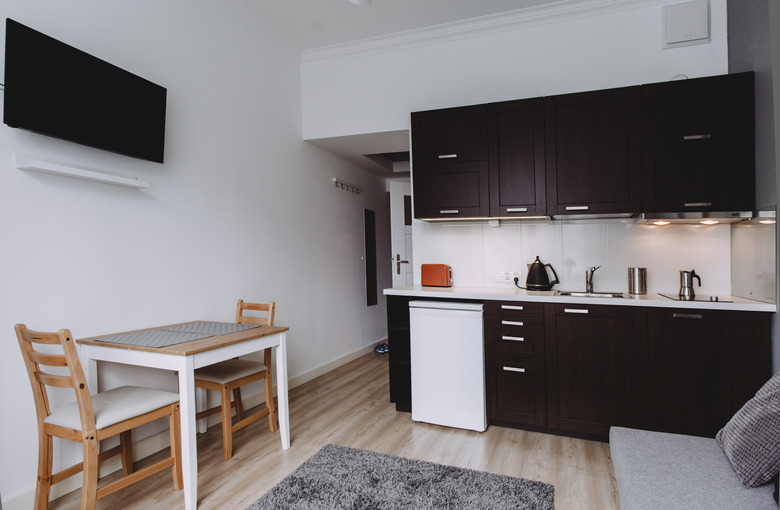What Safety Tips Should I Use For My Compact Refrigerator?
If you've decided to put a mini fridge in your bedroom, you're probably thinking more about convenient midnight snacks than household safety. Snacks are important, but safety should probably come first. Although it's not an everyday occurrence, refrigerators do sometimes catch fire and have been known to explode. They also present a few other hazards, like tipping, so it's important that you use them carefully.
Opt for New
Opt for New
Yes, you can probably find a great deal on a used mini fridge online, but think twice before you do. Buying a new fridge ensures that nobody has tampered with the power cord, attempted to fix the fridge themselves or done anything else that may compromise the unit's safe operation. New fridges also include specification sheets that tell you what type of refrigerant your unit contains. This is good information to have because, as Sciencing points out, some mini fridges use flammable refrigerants.
Buying new also gives you an opportunity to register your product with the manufacturer. This makes it easy for them to notify you in the event of a safety recall. If you opt for a used fridge, you have no way of knowing if there were any safety issues or if your unit was fixed as required.
Reduce the Risk of Fire
Reduce the Risk of Fire
All electrical appliances create some risk of an electrical fire, and mini fridges caught on fire before. To reduce the risk, always plug your refrigerator directly into the electrical outlet rather than using extension cords or adaptors. If your fridge came with a grounding prong, use it. Don't attempt to cut or alter the plug.
Prevent your fridge from overheating by making sure there is plenty of air circulating around the coils and vents. Vacuum behind and under your fridge every few weeks to prevent dust from building up where it could clog fans and vents. Turn the refrigerator off while you vacuum so you don't get shocked. Make sure papers and other clutter don't stack up on or around your mini fridge as this too creates a fire hazard. A dusty fridge with restricted airflow is not only dangerous, but also has to work harder, increasing the amount of electricity the unit uses.
A Proper Mini Fridge Stand
A Proper Mini Fridge Stand
It's important to make sure your fridge is set on a solid, sturdy base so that it doesn't tip or fall on you. Being smaller than a full-size refrigerator, a mini fridge fall probably won't prove lethal, but it can still hurt like a you-know-what. Pets and small children could be seriously injured by a falling fridge.
You can set your fridge on the floor if desired, but do so only if it feels sturdy there. Use a mini fridge stand to get the unit up off the floor if you have carpet instead of a solid surface like linoleum or hardwood. Ensure the stand you use is strong enough to support the refrigerator when it's full and large enough to hold the entire unit. Never leave the refrigerator hanging over the edge of the stand or table.
If you have your heart set on putting the mini fridge in a location where you're having trouble keeping it level and secure, install anti-tip brackets or straps.
Mini-Refrigerator Food Safety
Mini-Refrigerator Food Safety
Using your mini fridge safely means paying as much attention to the inside as you do the outside. As the season's change, adjust your mini fridge temperature dial as needed to maintain an internal temperature of 40 degrees Fahrenheit or cooler. According to the Academy of Nutrition and Dietetics, warmer temperatures encourage the rapid growth of bacteria that can cause foodborne illnesses.
The Academy also recommends cleaning any spills right away, and making sure you don't pack your fridge too full. Proper air circulation inside the fridge helps to keep your food at a safe temperature.
